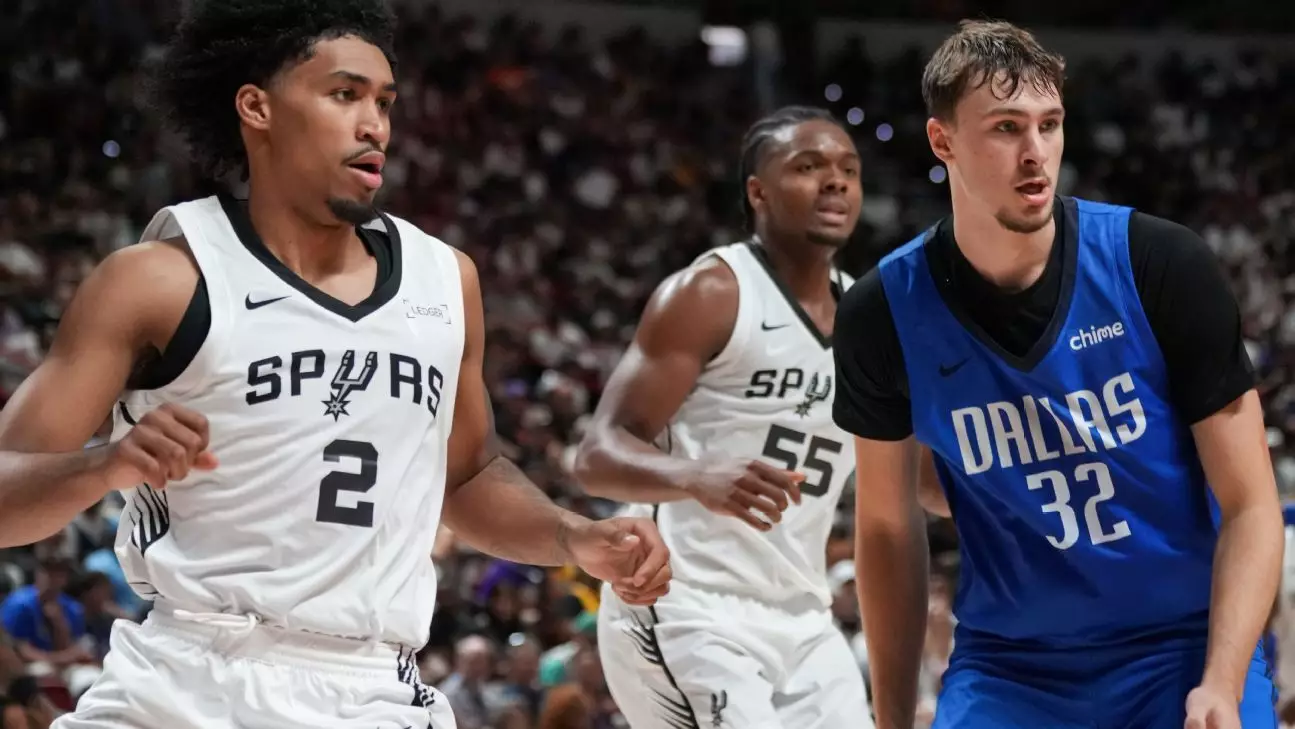The 2025 NBA draft class is shaping up to be a revolutionary chapter in basketball history, and early summer league performances highlight a landscape brimming with promise and excitement. Historically, the summer league serves as a testing ground for rookies, but this season, it feels more like a glimpse into the next generation of superstars who are ready to challenge established norms. The headliners—Cooper Flagg and Dylan Harper—have already begun to etch their legacies, igniting debate about not just their potential but the very future of NBA star power.
The real intrigue lies in how these young players are not merely showcasing their skills but also redefining what it means to be a top draft pick. Flagg’s dominant scoring and defensive presence contrast with Harper’s explosive athleticism and high-IQ plays. They demonstrate that the future belongs not to single skills but to versatile, high-impact players who can influence games on multiple fronts. Their early showings affirm that talent alone isn’t enough; mental toughness, adaptability, and a fierce competitive spirit are equally vital. The NBA’s evolution toward a more dynamic, positionless style of play hinges on athletes like these, who can perform under pressure and elevate their teams regardless of circumstance.
Playmaking and Performances That Signal Bigger Things
While the summer league is often seen as a developmental phase, the performances of Flagg and Harper elevate it to a stage of genuine importance. Flagg’s 31-point outing, filled with highlight-reel dunks, exposes a player who combines advanced scoring ability with emerging defensive capabilities. His aggressive drive to the basket and knack for drawing fouls suggest an old-school scoring instinct blended with modern athleticism. Yet, what truly sets him apart is his capacity to adapt, as indicated by his ability to get to the free-throw line consistently, displaying patience and strategic understanding. The game isn’t just about flashy plays; it’s about how well a player can translate summer league momentum into sustained, impactful contributions in the NBA.
Harper’s return from injury and immediate impact underscore his resilience and readiness to embrace the challenge of high-level competition. His scoring combined with rebounds, assists, and an electrifying block illustrates a basketball mind that’s mature beyond his years. When Harper swatted away Ryan Nembhard’s shot and drained a crucial floater at the buzzer, he proved that he’s not just a dunker or scorer but a well-rounded contributor who can adapt to different game situations. His quickness and spatial awareness are evident, signaling that he could develop into a primary playmaker rather than just a complementary piece.
Redefining Expectations for Emerging NBA Stars
The narrative that emerges from these performances is fundamentally transformative. Flagg and Harper aren’t just promising prospects—they are architects of their own hype, signaling a shift in how NBA teams identify and cultivate talent. They embody a new breed of player who combines star potential with a mature understanding of the game’s intricacies. This convergence of physical prowess and mental acuity could accelerate the timeline for rookie excellence, forcing veteran stars and organizations to recalibrate their expectations.
Moreover, the image of these players performing in front of a packed crowd, celebrities, and NBA icons adds a layer of psychological pressure that tests their composure. Their ability to thrive in such a high-stakes environment suggests that they are systematically preparing themselves for the bigger stage. Confronting expectations early and delivering results disrupts traditional developmental pathways, pushing league standards toward a more competitive and talent-rich evolution.
The interactions between Flagg, Harper, and seasoned players reveal critical insights: the NBA is no longer just a league of athletic giants but a battleground for strategic finesse, adaptability, and mental resilience. As these young stars gain confidence and refine their skills, they’re fostering a competitive ecosystem capable of elevating the entire sport. This is a pivotal moment when the future of basketball appears brighter, faster, and smarter—chaired by teenagers with the heart and skill to challenge legends.
The Implicit Power of High Stakes and High Expectations
What’s most compelling about their impressive beginnings isn’t merely the raw talent but how they seem to harness it under pressure. Flagg’s interactions with advanced defenders, and Harper’s impactful blocks and clutch plays, showcase athletes who are unphased by the grandeur around them. It signals a maturation process that, if sustained, will make them not just star prospects but also leaders of the next generation.
In a league where adaptability, versatility, and mental toughness often determine career longevity, these performances mark the early signs of future superstardom. Their confidence and poise suggest that they understand this window of opportunity doesn’t come often, and they’re seizing it with both hands. If their summer league trends continue and translate onto the NBA hardwood, fans and analysts will look back at this moment as a turning point—a harbinger of a transformative era driven by elite young talents.
The future is undeniably bright, but it’s also more demanding than ever. Players like Flagg and Harper are demonstrating that success hinges not solely on athletic brilliance but on the capacity to rise to challenges and seize moments of adversity. If they fulfill even a fraction of their burgeoning hype, the NBA’s competitive landscape in the coming years will be unrecognizable, propelled by the skills, determination, and unmatched drive of its newest stars.


Leave a Reply